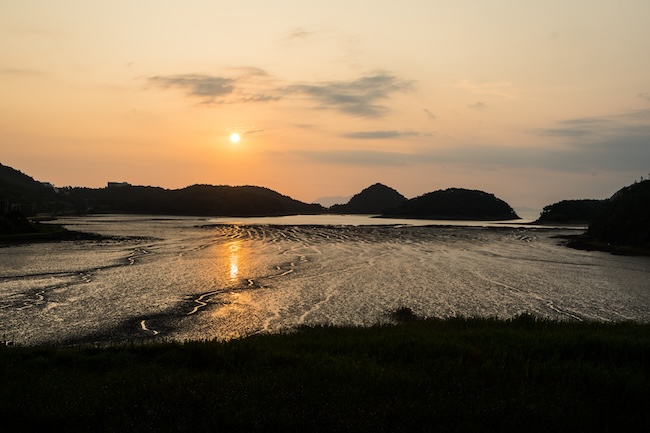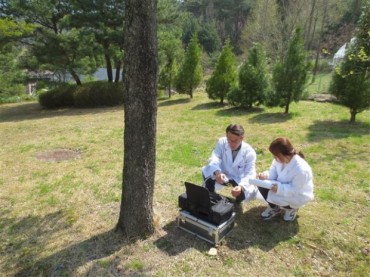
Goheung mud flat newly designated as Wetland Protected Area by the Ministry of Oceans and Fisheries (Image courtesy of Yonhap)
SEOUL, Nov. 27 (Korea Bizwire) – Climate change and a decline in biodiversity are referred to as the ‘twin crises’ facing humanity. Climate change destroys biodiversity, and in turn, biodiversity has an impact on climate, creating a vicious cycle.
Biological species unable to adapt to global warming disappear, and the sea becomes acidified after absorbing increasing greenhouse gases. The dying earth, forests, seas, and mudflats emit greenhouse gases.
Despite being twin crises, public interest in declining biodiversity is weaker than that in climate change.
The number of endangered wildlife species in South Korea increased from 267 in 2017 to 282 last year, with forest acreage declining by 1.4 percent from 60,158 square kilometers to 59,333 square kilometers.
On Sunday, the Ministry of Environment revealed the results of a survey of 1,500 adults across the country conducted by the public pollster Korea Research from June 20 to 26. The survey found that the recognition rate for the United Nations Framework Convention on Climate Change (UNFCCC) was 75.2 percent, compared to only 46.7 percent for the Convention on Biological Diversity (CBD).
Even in the international community, the general assembly of the UNFCCC is held annually, while the general assembly of the CBD is held biennially.
In response to climate change, the Paris Climate Change Accord was concretized in 2015, but the response to declining biodiversity only materialized last year with the Global Biodiversity Framework (GBF).
However, declining biodiversity is unwelcome news for humans, much like climate change.
During the process of relocating habitats to adapt to the changing climate, biological species can spread zoonotic diseases, and access to ecosystem services such as clean water and air may be compromised.
Taking these considerations into account, the Ministry of Environment has established the 5th National Biodiversity Strategy for 2024-2028, based on the GBF which consists of 23 action plans, such as turning more than 30 percent of the Earth into wildlife sanctuaries and restoring more than 30 percent of obsolete habitats.
In a public hearing held on November 23, the Ministry of Environment unveiled a draft of the strategy, which compressed the GBF’s 23 action plans into 21.
The draft integrated the 9th action goal of encouraging indigenous people to sustainably use biological species in accordance with tradition with the goal of ensuring the sustainable management of agriculture, forestry, fishery, and aquaculture.
The draft also integrated the 22nd and 23rd action goals, both aiming to guarantee fair and inclusive opportunities for women, children, teenagers, people with disabilities, and indigenous people to participate in the decision-making process.
M. H. Lee (mhlee@koreabizwire.com)






